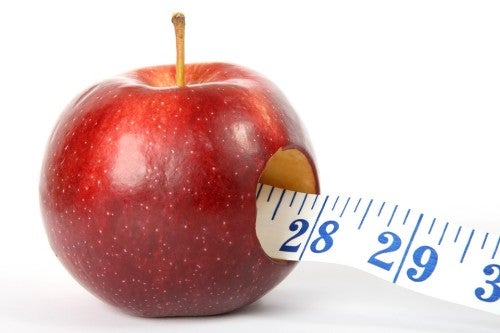Serving healthy choices in the lunch room, limiting availability and marketing of unhealthful foods and sugary drinks, and making water available to students throughout the day are some of the ways that schools can help prevent obesity. Making these types of changes in the school food environment will be no easy task, however. In the U.S., for example, the Department of Agriculture recently finalized comprehensive new school meal guidelines that will increase vegetables, fruit, and whole grains and curb sodium, saturated fat, and trans fat. (1) But due to political pressures, the agency was not able to fully implement the meal guidelines recommended by an expert panel at the Institute of Medicine. (2) (Read more about the political battles over school lunch, on The Nutrition Source website.)
Now that the new nutrition standards are on the books, will schools actually be able to meet them? It may be difficult to answer that question, since compliance is not strictly monitored week to week. And schools and face many other challenges to creating a food environment where the healthy choice is the default choice. Among the obstacles: budgeting for the higher costs of purchasing and preparing more healthful foods; coaxing children to accept the more healthful options; and addressing the multitude of ways that unhealthful foods and drinks are sold or served outside of school meals, from classroom birthday parties to school-wide bake sales and sporting events.
Here is a summary of obesity prevention recommendations for school meals and the school food environment, based on a review of expert guidance from the Centers for Disease Control and Prevention, the Institute of Medicine, the World Health Organization, the School Nutrition Association, the American Heart Association, and others. For more detailed guidance on these recommendations and ideas for putting them into practice, explore the source list and the links to other resources.
School Meal Programs
Encourage students to participate in breakfast, lunch, and after-school snack programs (1,2,3,4,5,6,7)
Offer meals that meet national nutritional standards, such as theU.S. Dietary Guidelines (1,2,3,4,6,7,8,9)
Set minimum and maximum calorie levels for school breakfast and lunch, for each age group (9)
Invest in cafeteria facilities to store, prepare, and display healthy foods, such as salad bars (7,10)
Avoid stigmatizing children who participate in free/reduced price school meal programs (3,7)
Give students adequate time to eat (1,2,10)
Train food service staff in healthy food preparation techniques and food safety (3,7,9)
Incorporate nutrition education into school meal programs (1,3,10)
Increase financial support for school meal programs from federal, state, and local governments (7,10)
Foods Sold or Served Outside of School Meals (Competitive Foods )
Ensure competitive foods meet healthy nutrition standards that are consistent with those of the school meal program (1,2,3,4,6,7,8,11)
Eliminate sugar-sweetened beverages in the school environment or limit access to them (2,3,4,10,12)
Ensure that food served at classroom parties and school functions, including fundraisers, meets competitive food standards (3,4,10)
Never use food as a reward or punishment (3,10,12)
School Food Environment
Make drinking water freely available to students in dining areas and throughout the day (1,3,8,10,12)
Offer pleasant, clean, and safe cafeterias (1,2,7)
Market healthy food choices (7,8,10)
Limit marketing of unhealthy foods (10)
- Bar commercial food marketing outside of dining areas; (3)
- Bar marketing of foods that do not meet competitive food guidelines or other nutrition standards; (2,3) or
- Bar all food advertising in schools (6)
Create and support school gardens (2,7)
Encourage staff to model healthy eating (1)
School Meals, Competitive Foods, and the School Food Environment-Source List
1. Pekruhn C. Preventing Childhood Obesity: A School Health Policy Guide. Arlington, VA: Center for Safe and Healthy Schools, National Association of State Boards of Education; 2009.
2. Lagarde F, LeBlanc CMA, McKenna M, et al. School policy framework: implementation of the WHO global strategy on diet, physical activity and health. Geneva, Switzerland: World Health Organization; 2008.
3. Alliance for a Healthier Generation. Healthy Schools Program Framework. 2009. Accessed July 11, 2011.
4. School Nutrition Association. National Nutrition Standards Recommendations. Alexandria, VA: School Nutrition Association; 2008.
5. Wechsler H, McKenna ML, Lee SM, Dietz WH. The Role of Schools in Preventing Childhood Obesity.The State Education Standard. 2004.
6. Institute of Medicine. Preventing Childhood Obesity: Health in the Balance.Washington, D.C.: Institute of Medicine; 2005.
7. White House Task Force on Childhood Obesity. Solving the Problem of Childhood Obesity within a Generation: White House Task Force on Childhood Obesity Report to the President. 2010. Accessed July 11, 2011.
8. U.S. Department of Health and Human Services. The Surgeon General’s Vision for a Healthy and Fit Nation. 2010. Accessed May 1, 2012.
9. Institute of Medicine. School Meals: Building Blocks for Healthy Children. Washington, D.C.: Institute of Medicine; 2010.
10. American Heart Association. Policy Position Statement on School Nutrition. 2008. Accessed July 11, 2011.
11. American Heart Association. Policy Position Statement on Body Mass Index (BMI) Surveillance and Assessment in Schools.2008. Accessed July 11, 2011.
12. Institute of Medicine. Nutrition Standards for Foods in Schools: Leading the Way Toward Healthier Youth.Washington, D.C.: National Academies Press; 2007.
